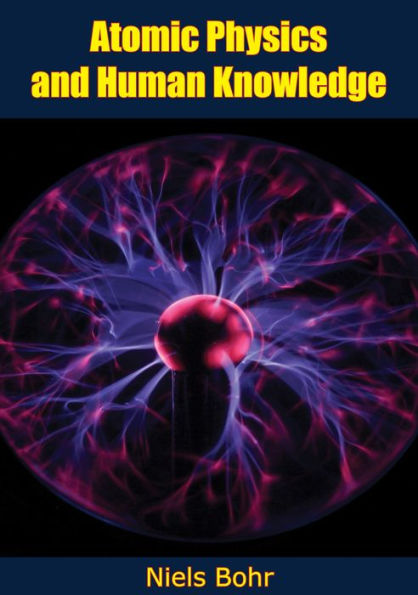This collection of articles, which were first published in 1958 and written on various occasions between 1932 and 1957, forms a sequel to Danish physician Niels Bohr’s earlier essays in Atomic Theory and the Description of Nature (1934).
“The theme of the papers is the epistemological lesson which the modern development of atomic physics has given us and its relevance for analysis and synthesis in many fields of human knowledge.
“The articles in the previous edition were written at a time when the establishment of the mathematical methods of quantum mechanics had created a firm foundation for the consistent treatment of atomic phenomena, and the conditions for an unambiguous account of experience within this framework were characterized by the notion of complementarity. In the papers collected here, this approach is further developed in logical formulation and given broader application.”
"1100174883"
“The theme of the papers is the epistemological lesson which the modern development of atomic physics has given us and its relevance for analysis and synthesis in many fields of human knowledge.
“The articles in the previous edition were written at a time when the establishment of the mathematical methods of quantum mechanics had created a firm foundation for the consistent treatment of atomic phenomena, and the conditions for an unambiguous account of experience within this framework were characterized by the notion of complementarity. In the papers collected here, this approach is further developed in logical formulation and given broader application.”
Atomic Physics and Human Knowledge
This collection of articles, which were first published in 1958 and written on various occasions between 1932 and 1957, forms a sequel to Danish physician Niels Bohr’s earlier essays in Atomic Theory and the Description of Nature (1934).
“The theme of the papers is the epistemological lesson which the modern development of atomic physics has given us and its relevance for analysis and synthesis in many fields of human knowledge.
“The articles in the previous edition were written at a time when the establishment of the mathematical methods of quantum mechanics had created a firm foundation for the consistent treatment of atomic phenomena, and the conditions for an unambiguous account of experience within this framework were characterized by the notion of complementarity. In the papers collected here, this approach is further developed in logical formulation and given broader application.”
“The theme of the papers is the epistemological lesson which the modern development of atomic physics has given us and its relevance for analysis and synthesis in many fields of human knowledge.
“The articles in the previous edition were written at a time when the establishment of the mathematical methods of quantum mechanics had created a firm foundation for the consistent treatment of atomic phenomena, and the conditions for an unambiguous account of experience within this framework were characterized by the notion of complementarity. In the papers collected here, this approach is further developed in logical formulation and given broader application.”
2.99
In Stock
5
1

Atomic Physics and Human Knowledge
97
Atomic Physics and Human Knowledge
97Related collections and offers
2.99
In Stock

Product Details
| ISBN-13: | 9781787208933 |
|---|---|
| Publisher: | Muriwai Books |
| Publication date: | 01/12/2017 |
| Sold by: | Barnes & Noble |
| Format: | eBook |
| Pages: | 97 |
| File size: | 816 KB |
About the Author
From the B&N Reads Blog
